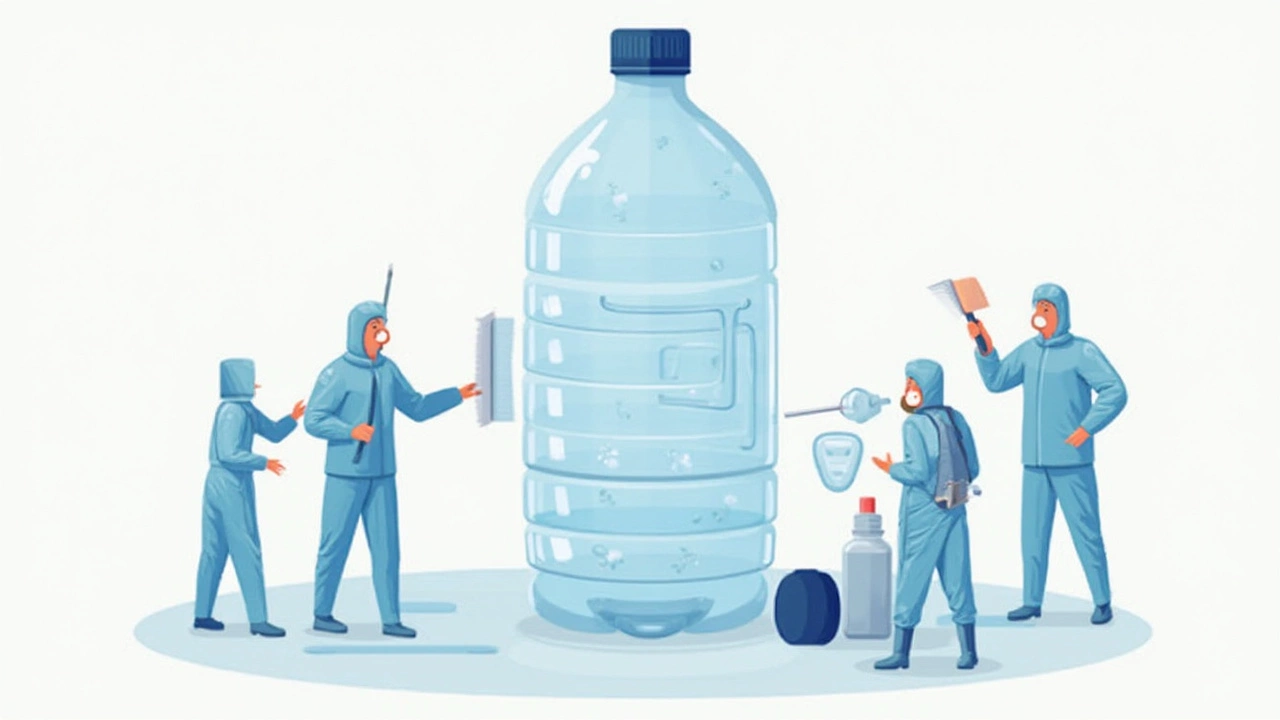How to Keep Your Reusable Water Bottle Clean and Safe
If you use a reusable water bottle every day, you’ve probably wondered how often you really need to clean it. The short answer: wash it with soap after each use and give it a deeper clean once a week. Skipping these steps can turn a handy bottle into a breeding ground for bacteria, mold, and nasty smells.
Every‑Day Routine: Soap, Water, and a Quick Rinse
Right after you finish a drink, dump the liquid, add a splash of dish soap, and give the bottle a good shake. Use a bottle brush if the opening is narrow – it reaches the sides better than just your hand. Rinse thoroughly with warm water until there’s no suds left. This simple routine removes most residues and stops germs from multiplying.
Drying matters just as much as washing. Turn the bottle upside down on a dish rack or towel and let it air‑dry completely. If water stays inside, mold can start growing in as little as 24 hours. A quick tip: pop a clean paper towel in the cap for an extra boost of airflow.
Weekly Deep Clean: Kill Hidden Germs
Once a week, give your bottle a thorough scrub. Fill it with one part white vinegar and two parts warm water, let it sit for 15‑20 minutes, then scrub with a brush. Vinegar is a natural disinfectant that breaks down biofilm – the slimy layer bacteria love. Rinse well, then pour in a mixture of baking soda and water, shake, and rinse again. This two‑step method removes stubborn stains and eliminates odors.
If you prefer a fizzy approach, drop a tablet of dishwasher detergent or an effervescent cleaning pod into hot water, let it fizz for a few minutes, and swish around. Whatever method you choose, always finish with a clear rinse and dry the bottle fully before closing the lid.
Beyond cleaning, a few extra habits keep your bottle in top shape. Avoid storing sugary drinks for long periods – sugar feeds bacteria. If you need to store juice or smoothies, empty and wash the bottle within a few hours. For sport‑type bottles with straws, disassemble the straw part and scrub it separately; those tiny tubes collect the most grime.
Finally, check the bottle’s material. Plastic bottles can develop micro‑scratches that harbor microbes, while stainless steel is more resistant. If your plastic bottle shows cracks or permanent stains, it’s time for a replacement.
Keeping your reusable water bottle clean isn’t a chore; it’s a quick habit that protects your health and extends the life of a product you love. Follow the daily soap wash, weekly deep clean, and proper drying steps, and you’ll always have fresh-tasting water on the go.
How Often to Clean Your Water Bottle and the Smartest Ways to Do It
Posted by Daxton LeMans On 16 May, 2025 Comments (0)

Reusable water bottles gather bacteria fast, needing daily washing with soap, especially after using for anything besides water. Weekly deep cleaning and careful drying stop mold and dangerous germs from growing. Skipping this routine risks turning your bottle into a health hazard.




